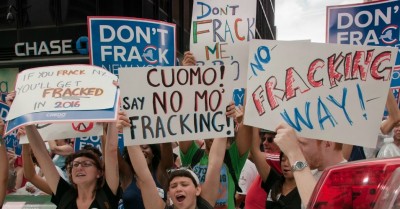Fragility of Fracking: Underground Coal Gasification Company Collapse

The announcement that underground coal gasification (UCG) company Five-Quarter Energy is being wound up, after 8 years of trying to raise money to set fire to coal seams under the coast of Northumberland, will be a welcome relief to anyone with any interest in the ecological or social fabric of these islands. Five-Quarter wanted to trial UCG on a scale never before attempted. The ongoing disaster at Linc Energy’s small UCG test site at Chinchilla in Queensland, Australia, where a 175 square kilometre area has “sustained irreversible, widespread contamination”, is just the most recent example in a long track record of failure.
Five-Quarter’s failure is also another clear demonstration of the fragile smoke and mirrors on which most extreme energy extraction is based. This is not an industry which is particularly resilient to any sort of opposition or scrutiny, as Five-Quarter have amply demonstrated in the past with their panicked legal threats against any questioning of their project. It is interesting to imagine how different the world might now be if a similar level of scrutiny and opposition had greeted Mitchel Energy Resources’ attempts to kick off exploitation of the Barnett Shale in Texas 15 years ago. If the fiction that shale exploitation involved something more than drilling many, many expensive wells, which each produce much less oil or gas, had been exposed back then, the flood of investment that followed might have been easier to staunch.

Rocky Mountain UCG Test Which Contaminated Groundwater In Hanna, Wyoming (1988)
The rumours that US arch-fracker Cheasapeake Energy may be forced to file for bankruptcy soon, the company lost $15 billion last year and is $10 billion in debt, plus the recent death of its ex-CEO less than a day after he was indicted for conspiracy to rig fracking lease auctions (which is the tip of a massive iceberg), only underline how precarious the shale industry really is. Producing the vast flood of investment required to drill hundreds of thousands of costly fracking wells during the boom required the manufacturing of a level “irrational exhuberance” to rival the dutch tulip mania or the south sea bubble.

Cougar Energy site at Kingaroy, Queensland Before It Was Shutdown
That said, we now live in a resource constrained world where real growth is hard to find, and until there are fundamental changes to the way our societies function, all we can expect is investors desperately jumping from one ridiculous energy pyramid scheme to another, driving increasingly destructive cycles of boom and bust. How long the present bust will last is far from clear, but drilling has all but ground to a halt in the US, and production is beginning to fall. Energy prices will start rising again at some point but in the meantime, now is the time to hit the frackers where it hurts.
Unfortunately it is highly likely that Five-Quarter’s licences will be acquired by a competitor and the threat is far from over, but the precedent set by Five-Quarter’s failure will inspire continued opposition and give potential UCG investors second thoughts. It seems that despite a £1 billion infrastructure loan guarantee (i.e. that the government would pay back the loan if the company couldn’t) and £15 million from a regional growth fund, Five-Quarter could not find anyone willing to invest in the project. The contribution to this situation by the ongoing campaigning by communities across the country is not to be under-estimated. Five-Quarter’s failed attempt to re-brand UCG as “deep gas winning” showed the level of their desperation.
In response Five-Quarter appear to have come up with a typically cunning scheme to build a plant to convert Liquified Natural Gas imported from Qatar into hydrogen, and sell it the chemical industry on Teesside. This would allow them to build up a market for a product that they might eventually produce, while doubtless trying to tap various pots of money for Carbon Capture and Storage. But, with the government’s limited support for CCS waning, even this stop gap project proved unworkable in the present climate and when Qatar Petroleum pulled out Five-Quarter’s had nowhere left to turn.

